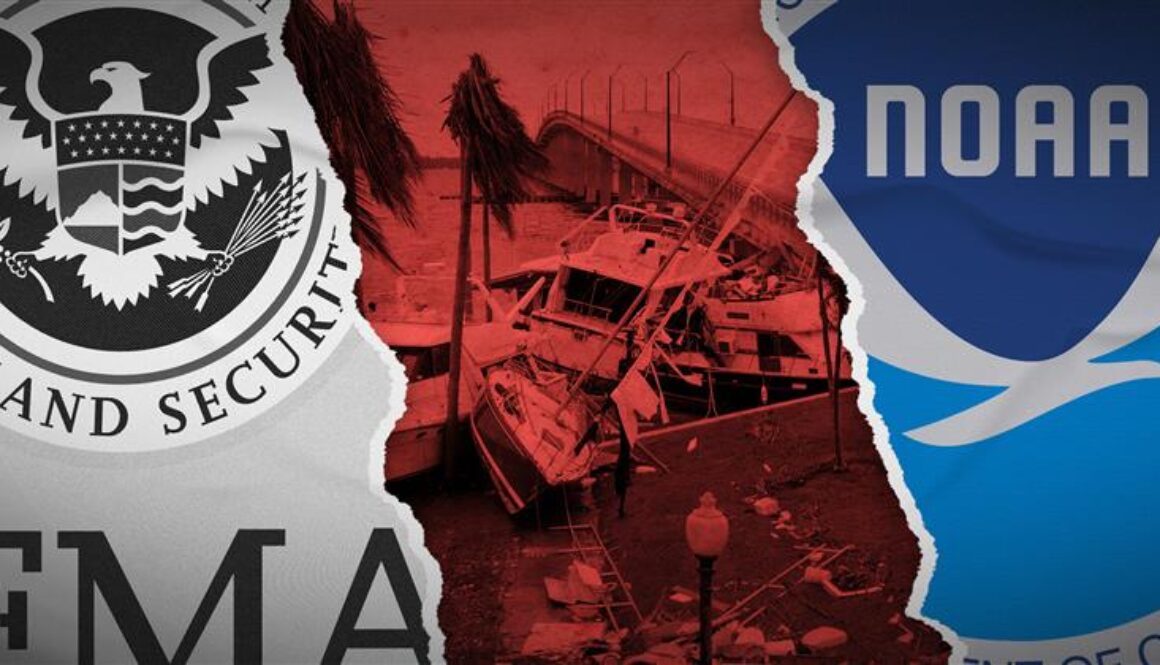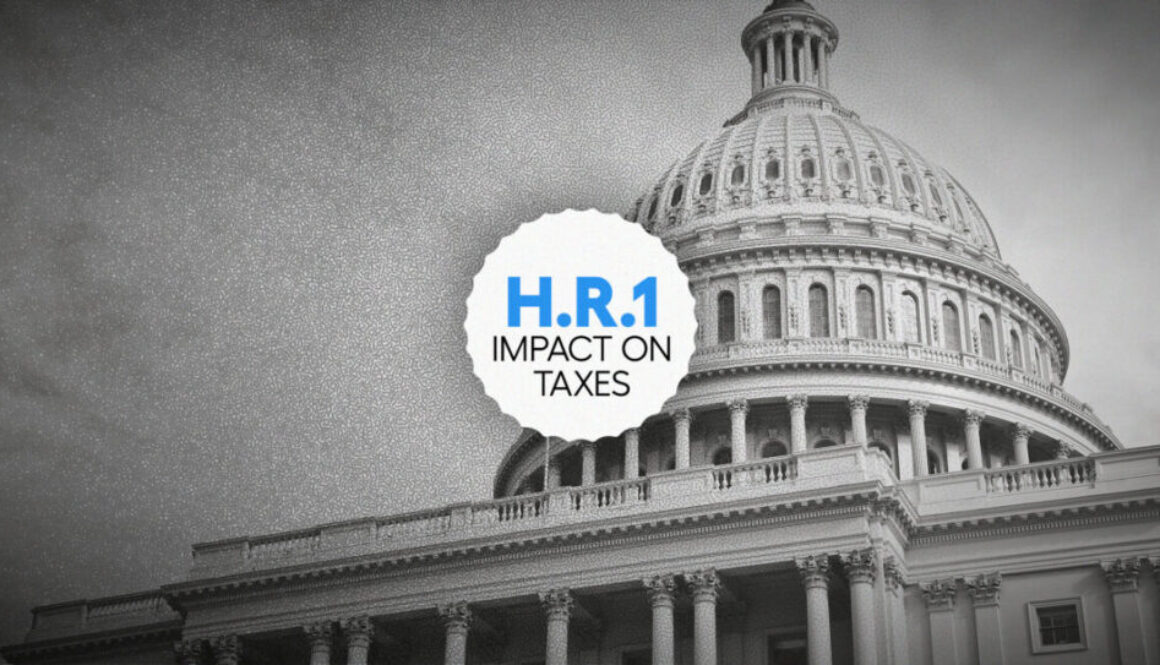FEMA, NOAA cuts put insurance coverage at risk, experts say

Budget and staffing cuts to U.S. government disaster-response and climate-monitoring programs – with more gutting proposals on the way – have insurance leaders and consumer advocates warning of grave consequences for the availability, affordability, and stability of insurance coverage across much of the U.S.
The reductions have already targeted the Federal Emergency Management Agency (FEMA) and the National Oceanic and Atmospheric Administration (NOAA)—two agencies that play a behind-the-scenes but foundational role in how property and casualty insurers assess, price, and absorb catastrophic risk.
The budget cuts to those core agencies, including the National Weather Service, have already had fatal consequences. Tornadoes that swept through Kentucky and Missouri in May killed 28 people—many of whom may not have received prompt warnings due to agency understaffing.
FEMA itself has been left “flying blind” due to the budget cuts, according to hurricane meteorologist John Morales. President Trump has floated abolishing the agency altogether and recently fired its director for defending its mission. Strategic planning has been canceled, staff have been laid off en masse, and the agency’s core flood insurance program—the NFIP—may lapse as early as September unless Congress acts.
Industry analysts say scaling back these agencies could force private insurers to take on greater exposure, especially in high-risk flood, fire, and hurricane zones. That could trigger higher premiums, reduced access to coverage, and more pronounced redlining of vulnerable areas.
Budget cuts ‘affect insurance underwriting’
“Cuts to NOAA and similar agencies absolutely affect insurance underwriting and prediction,” Gregg Barrett, CEO of the WaterStreet Company, a tech services provider for insurers, told The C.O.R.E Group, and insurance advisory company. “These organizations provide the baseline data we use to model risk: storm patterns, flood mapping, wildfire trends, etc. Without that, our ability to predict and price accurately starts to erode.”
Barrett added that when the data “gets thinner or delayed, we lose precision,” and that can lead carriers to adopt more conservative assumptions—translating to higher premiums, reduced coverage, or withdrawal from high-risk regions altogether.
FEMA’s NFIP currently serves more than 4.7 million policyholders, most of them in areas where private flood coverage is either unaffordable or unavailable. If the NFIP is downsized or phased out, experts say that responsibility would shift to the private market—if it is willing—or to state governments that may not be prepared to take it on.
Insurers would likely reevaluate underwriting practices in coastal and inland flood zones, and the result could be higher rates, more limited coverage, or total market withdrawal. Areas with high exposure and low income may be hardest hit.
Reinsurance rates could be affected
Without FEMA to help absorb post-disaster losses, reinsurers would face more frequent and more severe payouts. That could push reinsurance rates higher, especially in catastrophe-prone states. In turn, primary carriers may pass those costs down to policyholders or limit exposure in those regions.
To offset rising risk loads, some insurers may lean further into catastrophe bonds and insurance-linked securities (ILS), transferring more risk to capital markets. However, market volatility and investor caution around worsening climate impacts could limit the scalability of these tools.
NOAA supplies much of the meteorological and climate data that feeds catastrophe models used by insurers and reinsurers alike. Budget cuts could delay updates to flood maps, reduce monitoring coverage, or erode data quality—all of which would degrade insurers’ ability to price risk accurately.
Industry observers say that without prompt and reliable federal data, insurers will err on the side of caution—leading to broader risk corridors, higher premiums, and a more limited insurance market for high-risk properties.
FEMA’s role in post-disaster coordination—debris removal, shelter coordination, temporary housing, and infrastructure support—also helps streamline insurance claims and recovery.
Without it, carriers may face higher administrative burdens and more complex loss scenarios, leading to longer claims resolution timelines and rising overhead costs.
Industry executives note that insurers could face increased litigation in disasters where property access is delayed, recovery efforts are fragmented, or liability is unclear.
States may need disaster insurance programs
In FEMA’s absence, states may be compelled to establish disaster insurance programs, like Florida’s Citizens Property Insurance Corp. But experts warn that most states lack the funding, infrastructure, or political consensus to quickly implement such solutions—especially at the scale needed.
This decentralization could lead to inconsistent disaster coverage across states, creating challenges for national carriers trying to support cohesive underwriting strategies.
Federal flood insurance is often a requirement for securing federally backed mortgages in high-risk zones. If FEMA and the NFIP are rolled back, banks may be unwilling to lend in these areas, leading to declining property values and stalled real estate transactions. This would further limit insurability and economic viability in those regions.
With FEMA potentially receding, more attention would fall on the private insurance market’s role in disaster recovery. Consumer advocates, including the nonprofit Insurance Fairness Project, have warned that carriers are already retreating from high-risk zones—and federal cuts could accelerate that trend.
The group noted that Washington’s proposed pullback through budget and staffing cuts would place an even greater burden on private insurers, local governments, and homeowners already struggling with affordability and access.
‘Protection gap’ poised to grow
“What’s happening is what [former US Treasury Secretary] Janet Yellen referred to a couple of years ago as the ‘protection gap’ that is poised to grow,” said Jordan Haedtler, policy advisor at the Insurance Fairness Project. “Because placing more of the burden for disaster relief on state and local governments doesn’t necessarily eradicate the need to help households and businesses recover from disasters.”
The group has also urged lawmakers to consider the downstream effects on mortgage markets, housing stability, and recovery efforts in underserved communities.
For decades, FEMA and NOAA have helped stabilize America’s risk landscape—providing not only financial and logistical support but also the climate and weather data that underpins the insurance sector’s risk modeling.
If those supports are weakened or withdrawn, private insurers may face a new era of uncertainty and heightened exposure. While innovation in catastrophe financing and parametric coverage may help fill some gaps, most experts agree the transition would be rocky—and felt most acutely in the places least able to bear the cost.
Some ‘states go bankrupt without FEMA’
“Those states go bankrupt without FEMA,” said Rep. Jared Moskowitz, a former emergency management chief in Florida—one of the most hurricane-prone states in the nation and a top recipient of FEMA aid over the past decade.
As insurance companies pull back, more Americans are going without coverage. The Consumer Federation of America estimates that $1.6 trillion in home value is now unprotected. That puts not just individual families at risk, but entire local economies, housing markets, and mortgage systems.
The Insurance Fairness Project notes that more than 40 consumer and climate advocacy groups have petitioned Congress to protect FEMA and extend the NFIP, calling the program “the main — and sometimes only — flood insurance option available to most homeowners in flood-prone areas.” Without it, they warn, “families that need to protect their homes and assets from inevitable flooding” will be left defenseless.
“The Trump administration seems to be doing away with agencies that many local governments rely on, as well as a wide range of businesses from agriculture to the insurance industry itself for CAT modeling and for disaster preparedness and disaster recovery,” said Haedtler. “So, the building use, building codes, and land use and all of the standards that go into those policy decisions are eroded by weather forecasting being more limited.”
Ripple effects already visible
The ripple effects are already visible. Insurance claim delays following wildfires in California and Hurricane Helene in the Carolinas have prompted protests and lawsuits. Local officials in blue states have accused the federal government of selectively denying aid—another echo of Trump’s first term, when politics sometimes dictated disaster response.
There is some hope within the insurance industry that technology and innovative strategies will fill some of the void left in the wake of the government cutbacks.
“To adapt, the industry must rethink catastrophe strategies by partnering with private data providers, expanding scenario planning, and leveraging scalable, AI-driven disaster response systems,” said Don Okolie, global head of insurance underwriting at Genpact, a US information technology services and consulting firm. “Generative AI and advanced analytics are already stepping up to solve this issue.”
Okolie says 69% of insurers, according to research, are now using these technologies to drive growth through faster workflows, personalized underwriting, and improved risk predictions.
With 60 million Americans living in hurricane zones, the stakes are massive. When families cannot rebuild, communities hollow out. Housing markets slump. Mortgage defaults rise. And insurers, already retreating, are unlikely to return.
As the clouds gather offshore, one thing is clear: the real disaster may be the one our system is no longer equipped to handle.
© Entire contents copyright 2025 by InsuranceNewsNet.com Inc. All rights reserved. No part of this article may be reprinted without the expressed written consent from InsuranceNewsNet.com.
The post FEMA, NOAA cuts put insurance coverage at risk, experts say appeared first on Insurance News | InsuranceNewsNet.





















